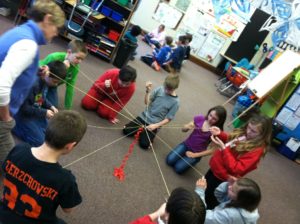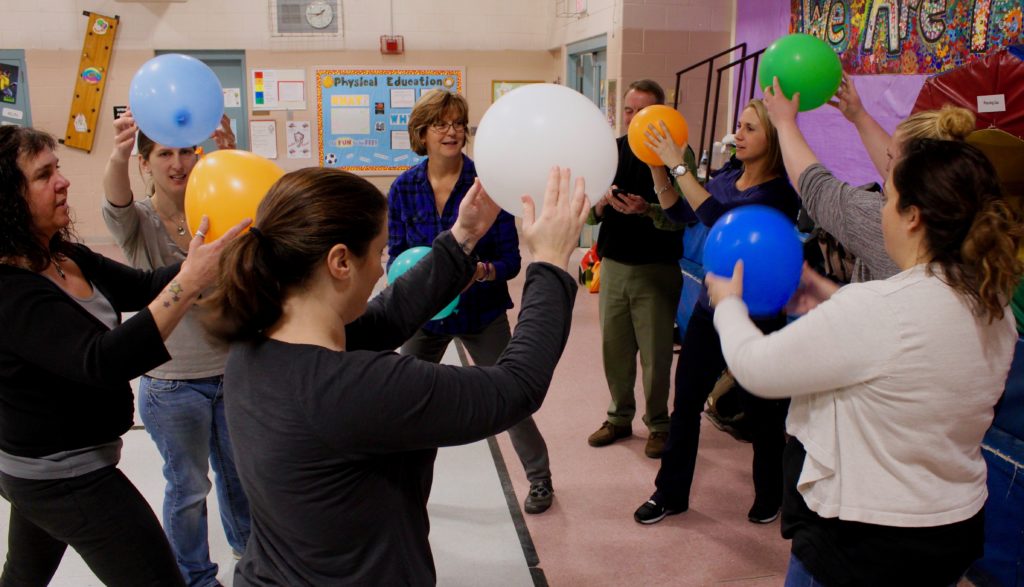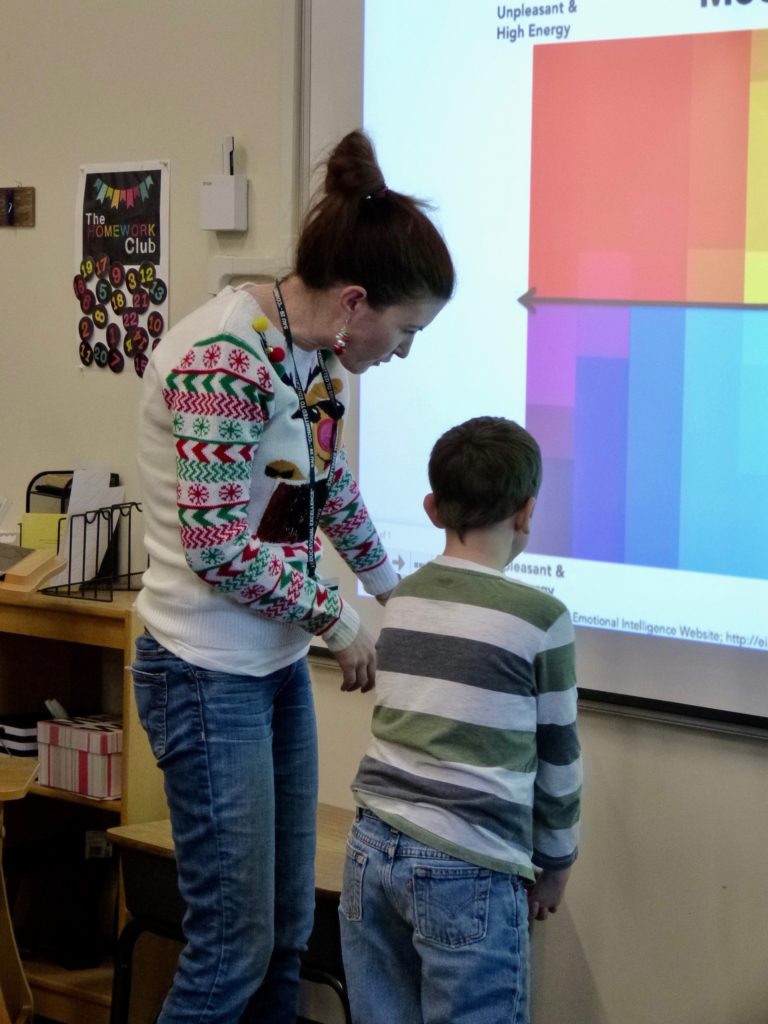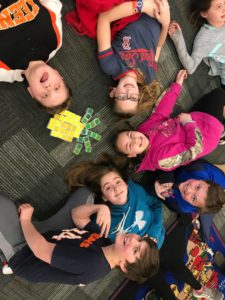School Culture Thrives

School Culture Thrives When Relationships Abound
A Retrospective Before, During, and Projections After COVID-19
By Jim Grout
I recently delivered High 5 Adventure’s first-ever virtual workshop. As one who has always relied upon in-person teaching to form connections and build relationships, the thought of going virtual was somewhat intimidating. I envisioned that our learning atmosphere would be woefully lacking in a personal connection. Guess what?
An Ah-Ha Moment in Virtual Learning
It never happened. In fact, I came away more energized and invigorated than I’ve felt since Covid-driven distance learning became the new normal in 2020. The atmosphere of being “virtually present” was palpable amongst our group of classroom learners. The level of engagement as evidenced by the smiles, the laughter, and the affirmation of the nodding of heads defied the fact that we were on screen but rather led me to believe we were literally sharing the same space. How is this possible you might ask? The answer is a simple one; that the human desire and need to form connections and build relationships overcomes any obstacles, even a stubborn and lengthy pandemic and the obstacle of computer screens.
Just imagine what will be possible when teachers and learners are back sharing the same space! Perhaps school culture will emerge stronger than ever as teachers, students, and administrators relish the joy of being face-to-face and embracing what they have intuitively been missing for all these days. The transition back to school (or work) will not be without challenges, but I’m reminded of a past blog I wrote about the importance of positive school culture and how to create one. I think the desire to create such a culture, will be stronger than ever, as a result of the deprivations caused by the pandemic. Let’s jump back to a previous “Ah-ha” moment I wrote about in early 2019…
Foundations of a Good School Culture
I had an “Ah-ha” moment when I read an article titled What Makes a Good School Culture? It is written by Harvard’s Leah Shafer and published under the column Usable Knowledge, Relevant Research For Today’s Educators. I encourage you to read the article. The article suggests that “…connections—strong and overlapping interactions among all members of the school community” are the key to shaping and maintaining a good school culture. That statement hits the mark in my mind.
It seems like this is an intuitive concept, but for many reasons, that basic human skill of connecting with others is absent in so many settings and is in dire need of a reboot. It goes on to describe those interactions as beginning at the top, with the principal, and continuing down through and including the school’s adult community, from administrators to teachers. This theory is solid but missing from the approach is an important constituency in the culture puzzle: the students. Why do students matter so much in the formation of strong school culture?
Shaping a Caring Classroom
Our experience at High 5 is that school culture begins in the classroom with the relationship between teachers and students. Forming a strong school culture includes a trickle-up process, in addition to a trickle-down. Can you remember a teacher from your past with whom you had a strong connection, someone who believed in your abilities when you didn’t have the courage or capacity to believe in yourself? Teachers genuinely care about their students. The result of this caring shapes the classroom culture. A good school culture will arise out of an environment where communication is open, and where behaviors that promote values like empathy, honesty, and good citizenship, are present in the room each, and every day. The Harvard article supports this contention as it clearly states, “Culture is Connections”.” A healthy partnership in learning between teachers, administrators, other adults in the academic community AND students, is the foundation and the ultimate measure of school culture.
Introducing Edge of Leadership (EOL)
Since 2012, High 5 has had the opportunity to partner with the SAU #29 Keene, NH school district to test our theories about school culture and to examine our findings in a real-world setting through our Edge of Leadership (EOL) Program. What began as a pilot program involving EOL and the 5th-grade classes of one elementary school, is now active in every school in the Keene district and is included in the district’s curriculum map, making it a permanent part of the educational experience. We are expanding into new grades at the elementary level because social and emotional learning readiness is not age-dependent. The sooner you begin, the more proficient you become.
In sum, EOL is an enhancement curriculum framework, combining SEL, leadership training, and team-building activities. It has resulted in statistically significant improvements in the following skills:
- Self-awareness
- Leadership skills
- Awareness of and respect for others
- Successful relationship building and collaboration


As the quality and intentionality of interactions grow, the resulting classroom culture expands and invites new learning opportunities. The flip side of improved classroom connections is a natural decrease in the need for classroom management. See our EOL in Keene Schools: 2019-2020 Year-End Report to read quotes from teachers and a summary of the effects and outcomes of this impactful program.
At High 5, we are working every day on groundbreaking ways to improve school culture and thereby improve the quality of education. It is the same recipe that we employ at High 5 Adventure to create an organizational culture that motivates people to work hard and stay true to an organization-wide belief in our motto: Connect.Empower.Lead…Be the Example!
What’s next…
Covid has been a challenge, but it has also been a catalyst for High 5 Adventure to enlarge the circle of teachers and students who can benefit from social and emotional learning and leadership
development skills. Our newly emerging digital platform is coming soon to provide teachers and students with extra supportive digital resources they need. Most importantly, we know these resources will lead to stronger school communities. From virtual, in-person, to hybrid classrooms, we want to part of the solution of creating strong school cultures, in which relationships turn the wheel of learning for every student.
To learn more about EOL click here to watch a short video.

HIGH 5 ADVENTURE LEARNING CENTER
130 Austine Drive, Suite 170
Brattleboro, VT 05301
802-254-8718
877-356-4445
Fax: 802-251-7203
